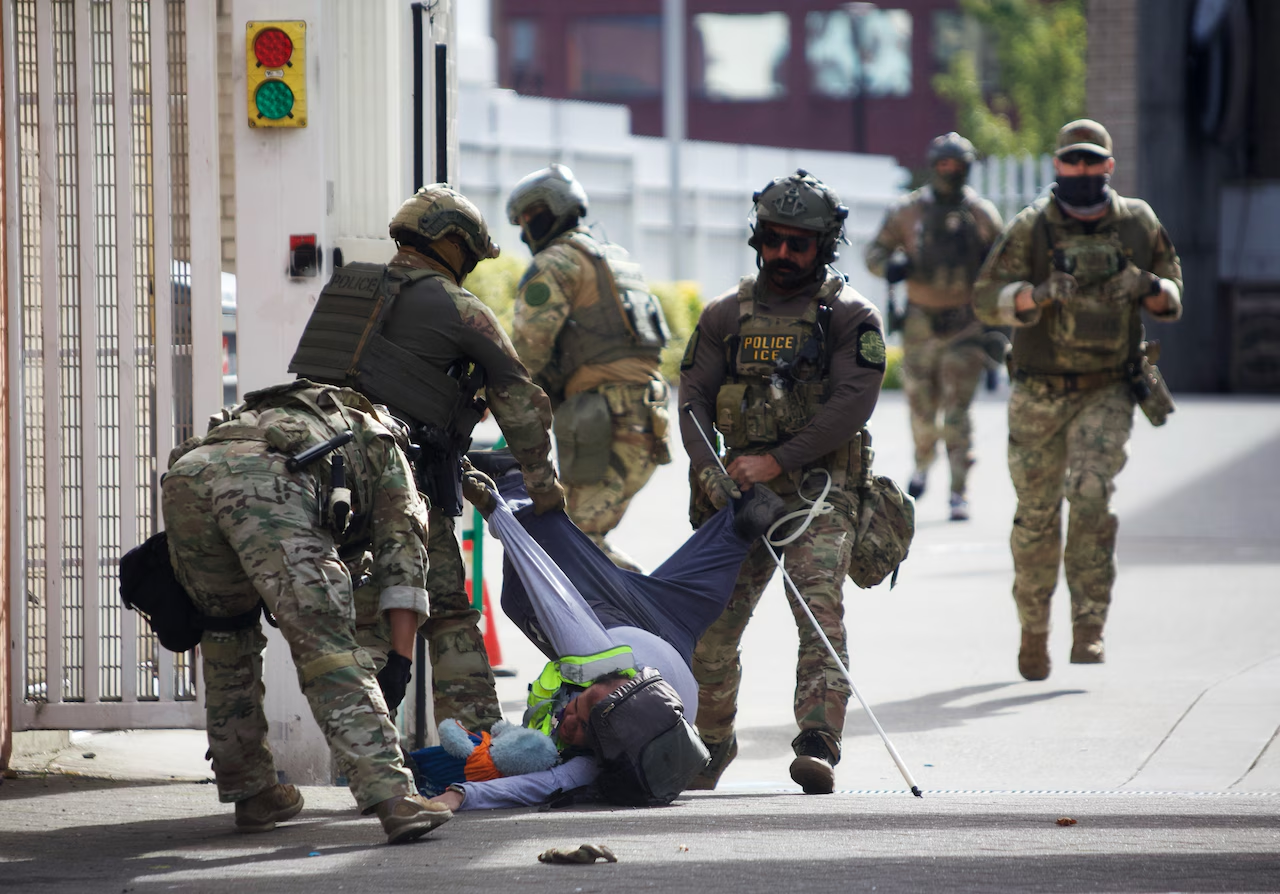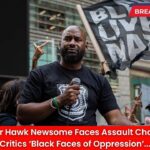Federal Agents Detain Blind Man at ICE Protest
Quinn Haberl, a 36-year-old legally blind man from Portland, Oregon, says six federal agents forcibly detained and dragged him during a peaceful protest outside the U.S. Immigration and Customs Enforcement (ICE) facility in South Portland last weekend.
Haberl, who stands at 4-foot-6 and was born with congenital glaucoma, believes his disability and small stature made him an easy target.
“They picked the weakest person they could find and made a big show out of it,” Haberl said. “I think they wanted to make a point.”
Also Read
The incident, captured in photos and videos, is the latest example of federal law enforcement’s aggressive tactics toward demonstrators who do not appear to pose a physical threat.
Repeated Encounters with Federal Agents
Haberl’s detention on Saturday marked the second time in a week that federal officers used physical force against him while he sat peacefully near the facility’s driveway — a frequent flashpoint in the ongoing protests over President Donald Trump’s immigration policies.
Despite the confrontation, Haberl remains determined to continue protesting.
“What happened to me is not OK,” he told The Oregonian/OregonLive. “What’s happening to others is not OK.”
ICE officials did not respond to requests for comment.
Motivation and Background
Haberl began attending protests at the ICE building about two and a half weeks ago. He said he travels most evenings from his downtown Portland home via streetcar to the South Waterfront neighborhood to join other demonstrators.
“I have friends who have been harassed by ICE and ordered to show proof of citizenship just because of the color of their skin,” he said. “I’m not against immigration reform. What I’m against is deporting people whose only so-called crime is being here. That’s wrong and a waste of money.”
Haberl and his wife moved from Minneapolis to Portland a year ago, where he works for an Oregon nonprofit organization.
A Personal Reason to Protest
For Haberl, his activism is deeply personal.
“As a minority and as somebody who is disabled, I’ve lived my life feeling like the system doesn’t care about me,” he explained. “This administration just reinforces that feeling.”
He typically joins the evening demonstrations wearing a green safety vest, using his white mobility cane, and carrying a powder blue teddy bear. He describes the protests as peaceful and even joyful at times, with music and community gatherings.
“To be totally honest, my favorite song to dance to has been ‘Baby Shark,’” he said with a laugh.
Haberl said protesters are careful not to cross a blue line painted on the sidewalk that marks the boundary of federal property.
The First Incident: October 14
On the Tuesday before his detention, Haberl decided to remain seated near the driveway in an act of civil disobedience. Federal agents were clearing the area before vehicles exited the facility.
“I was going to hold my ground. I wasn’t going to fight them,” he said.
Video footage shows two agents lifting Haberl from the ground and dropping him several feet away as bystanders shouted that he was blind.
“They just threw me to the ground,” Haberl recalled. “I almost hit my head on a cement wall.”
Despite the incident, Haberl returned to the same spot days later.
The Second Confrontation: October 18
During Saturday’s protest, Haberl said he intentionally moved aside from the driveway before agents emerged. Yet six federal officers approached him, grabbed him, and carried him into the ICE facility as he struggled and called for help.
“I remember screaming for somebody to help me,” Haberl said. “I thought I was going to die.”
He was detained inside for about 75 minutes and told only that he was accused of “failure to comply with federal police.”
“They never yelled at me to move off the blue line,” he said. “My hands were at my sides. My feet were in front of me.”
Haberl was eventually released and escorted outside.
“I was crying. A lot of it was shock,” he said. “People called me brave and a hero, but I don’t feel like I did anything.”
Aftermath and Recovery
Following his release, Haberl went to the hospital and was treated for contusions on his shoulders, hands, and arms. Though his physical injuries were minor, the emotional toll remains significant.
“I still need to heal emotionally,” he admitted. “But I’m going back because I have to go back.”
For Haberl, the protests are about more than politics—they’re about visibility, dignity, and justice.
“They may have picked the weakest person,” he said, “but I’m not going to stop standing up for what’s right.”












